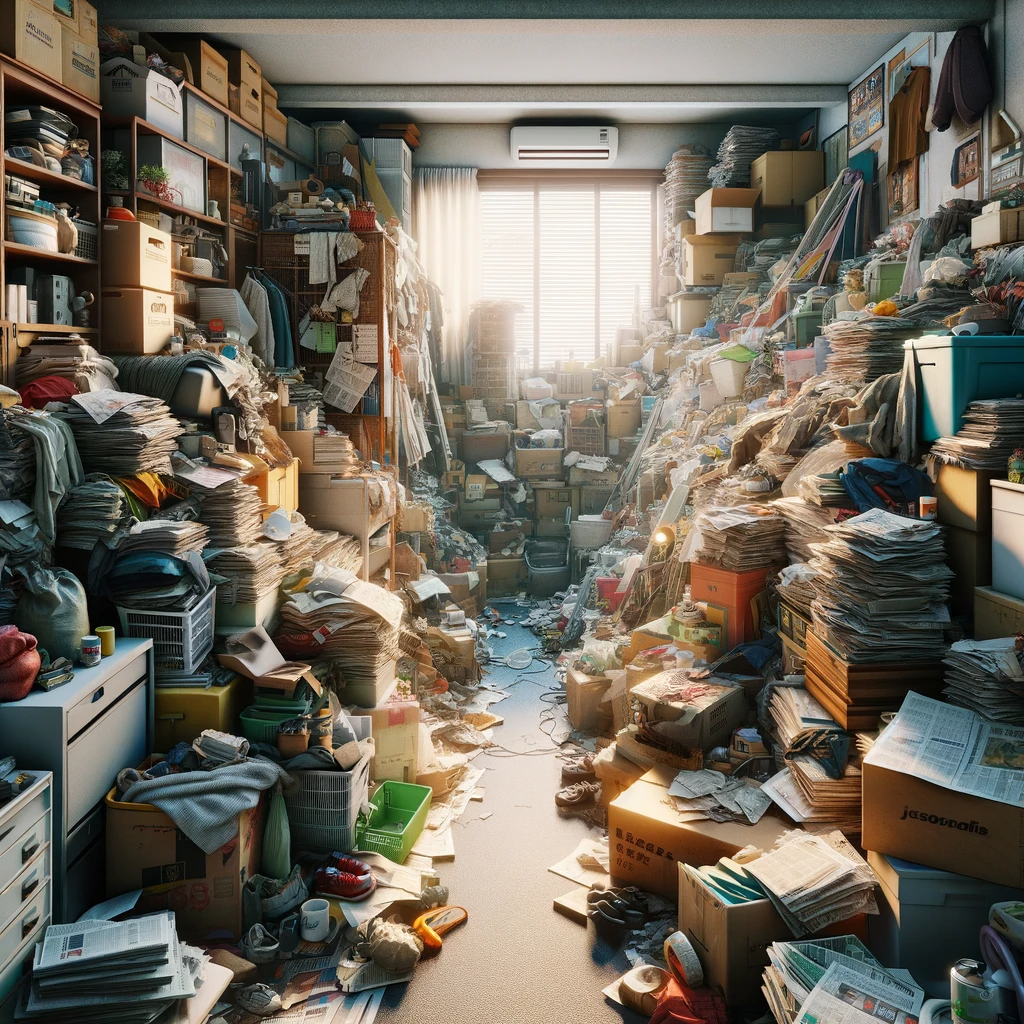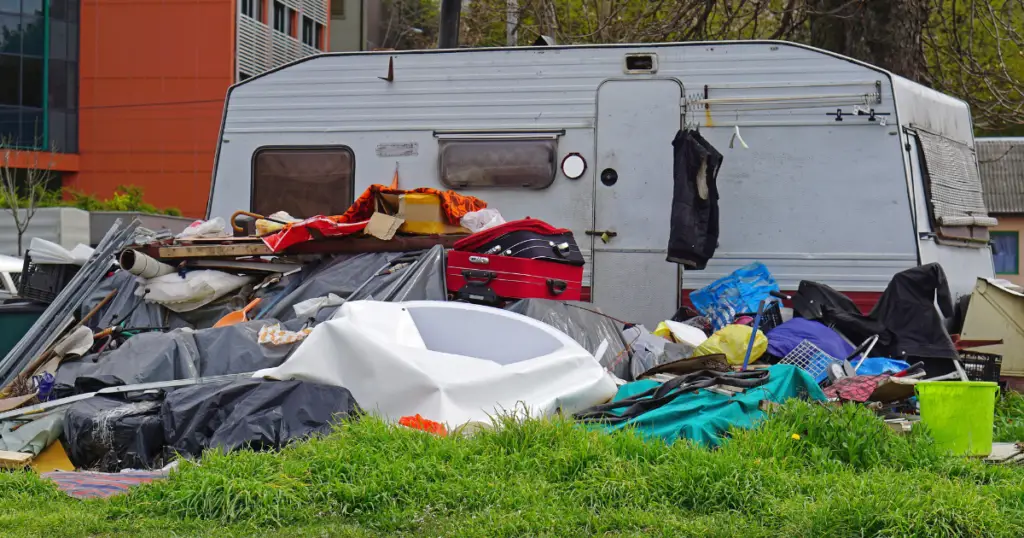[et_pb_section fb_built=”1″ admin_label=”Blog” _builder_version=”4.18.0″ _module_preset=”default” background_color=”#F9F6F5″ custom_padding=”||||false|false” collapsed=”on” global_colors_info=”{}”][et_pb_row _builder_version=”4.20.2″ _module_preset=”default” custom_padding=”||||false|false” global_colors_info=”{}”][et_pb_column type=”4_4″ _builder_version=”4.17.4″ _module_preset=”default” global_colors_info=”{}”][et_pb_text _builder_version=”4.21.0″ _module_preset=”default” header_2_text_color=”gcid-c6518ae1-29db-4f1f-99d4-4111b62b7e61″ hover_enabled=”0″ global_colors_info=”{%22gcid-c6518ae1-29db-4f1f-99d4-4111b62b7e61%22:%91%22header_2_text_color%22%93}” sticky_enabled=”0″]
Hoarding disorder is a serious issue that affects millions of people in our society. It can drastically interfere with a person’s physical, psychological, and emotional well-being, leading to increased stress, isolation, and even depression. As the condition progresses, it can also put them and their families at risk. Yet despite its prevalence, many people still don’t understand what hoarding disorder is or why it occurs. This article delves into hoarding disorder and provide insight into understanding symptoms, causes, treatments, and more.

What is hoarding?
According to American Psychiatric Association – APA, hoarding is a psychiatric condition characterized by excessive accumulation and persistent difficulty in discarding or parting possessions, regardless of their actual value. They generally have difficulty discarding items, even when they are no longer useful or necessary. It is estimated that 2–6% of the population has a hoarding disorder. People who hoard may not see it as a problem and instead often view it as an expression of their identity.
Hoarders are usually ashamed or embarrassed about their behavior and become isolated from family and friends due to the embarrassment surrounding their disorder. The cause of hoarding disorder is still not fully understood, but research suggests a combination of genetic, psychological, neurological, social, and environmental factors may play a role in its development.
Is hoarding an Obsessive Compulsive Disorder, Mental Health Disorder, or a Mental Health Crisis?
Hoarding has become increasingly recognized as a mental health condition, and it is now classified as a distinct disorder in the fifth edition of the Diagnostic and Statistical Manual of Mental Disorders (DSM-5). While overlaps exist between hoarding syndrome, Obsessive Compulsive Disorder (OCD), and other mental health issues, they are separate conditions with different causes.
Hoarding disorder is characterized by ongoing difficulty discarding or parting with possessions, even if they appear to have no value. It can lead to distress, clutter that disrupts an individual’s ability to use their living space, health and safety risks, and significant disruption in social and occupational functioning.
Common types of Hoarding
Hoarding is a complex issue that can take many forms and lead to different outcomes depending on the type of items being hoarded. The motivations for it also vary among the different types of hoarding. Examples of common hoarders range from those who keep collections of objects with no particular value or meaning to them, to people who may purchase or rescue animals in large numbers without being able to provide basic care, to those who buy food in bulk or store piles of paper items, and even those who collect what most people would discard.
Here are some of the most common types of hoarding disorders:
- Clutter hoarding – Clutter hoarders keep large collections of objects such as knick-knacks and mementos, but no specific item has any particular value or meaning to them.
- Animal hoarding – Animal hoarders purchase or rescue animals in large numbers and may be unable to provide basic care due to blocked access or overcrowding living conditions.
- Food hoarding – Food hoarders often buy in bulk, leading to entire pantries being overstocked with food that may go uneaten and unused for long periods.
- Paper hoarding– Paper hoarders store piles of paper items, including old bills, newspapers, and magazines ranging from small piles to towering documents.
- Trash hoarding– Trash hoarders keep garbage that most people would discard – such as food wrappers and beverage containers – due to feeling overwhelmed about discarding items or worrying about not having enough money if needed in the future.
What is the difference between clutter, collection, and hoarding?
Clutter and hoarding are different issues, though they may often appear similar. Hoarding is an extreme form of disorganization that can originate from a person’s hoarding disorder, in which the individual perceives an emotional attachment to their items and feelings of distress when attempting to discard them. Poor hygiene, visible clutter, and an accumulation of items with little or no value are all potential signs of hoarding. Meanwhile, clutter can refer to any mess or disorganization that has built up over time. Unlike hoarding, clutter generally does not involve a compulsive need to keep all items regardless of value or utility.
When it comes to collections, there is an important distinction to be made between hoarding and collecting. Collecting involves the intentional acquisition of items that have some value or significance, while hoarding often involves the unintentional accumulation of items with little or no value. Whereas collectors generally display their items in an organized manner, hoarders typically accumulate items haphazardly and let them pile up without any sense of order.
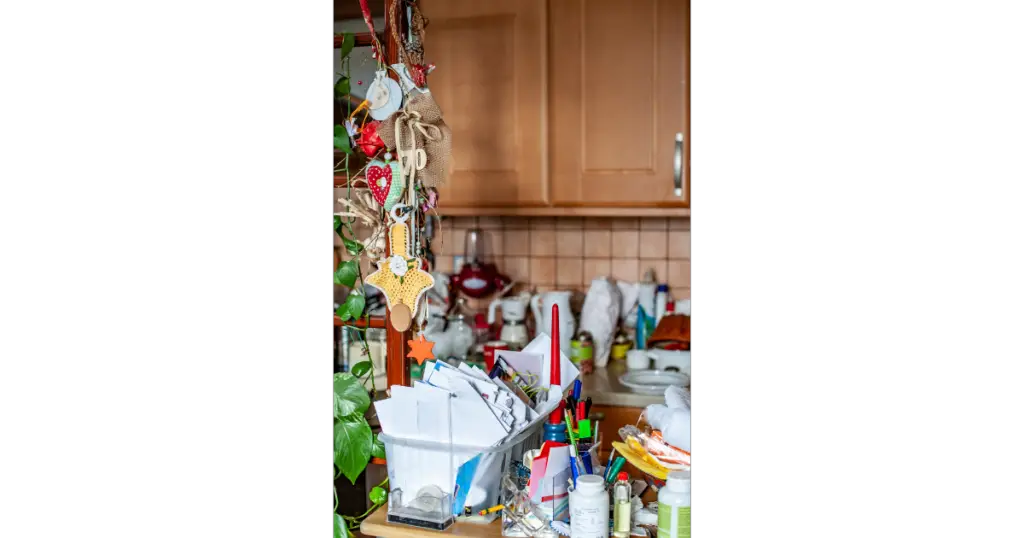
What are the Symptoms of Hoarding?
Symptoms of hoarding can vary from person to person, but some signs may include:
- An inability or unwillingness to discard items that have little or no value.
- Excessive acquisition of unnecessary items.
- Visible clutter and an accumulation of possessions impede movement and disrupt the intended use of living space.
- Difficulty making decisions relating to the disposition of possessions due to fear or anxiety associated with discarding them.
- A distorted sense of value in which all items are perceived as invaluable, no matter how insignificant.
- Poor hygiene and/or health problems resulting from living in a cluttered environment that encourages the presence of dust, mold, and other contaminants.
Compulsive hoarding can have a serious impact on family members, as they may feel responsible for the hoarder’s home. Mental health professionals can help identify potential sources of distress and suggest coping mechanisms to reduce compulsive behavior. Professional intervention can also guide in organizing and decluttering a hoarder’s home effectively and compassionately.
How is Hoarding disorder diagnosed?
Hoarding disorder is typically diagnosed when a person exhibits signs and symptoms of compulsive hoardings, such as difficulty discarding possessions, a distorted sense of value associated with possessions, and an excessive accumulation of items that impede on living space. Diagnosis is usually made after considering the individual’s medical history, family and social situation, cognitive abilities, feelings of distress or functional impairment, as well as any co-existing psychiatric and physical disorders.

What are the different levels of hoarding disorder?
The mental health community has identified 5 distinct levels of hoarding severity that can help diagnose a full hoarding disorder. These five levels are based on the behaviors associated with hoarding and range in order from least to most severe:
Stage 1 – Accumulation of Unwanted Items with Minimal Concern
Is characterized by clutter and the inability to discard items, with the living space still being usable and mostly organized. Examples of this stage include having too many books or papers in a home without it affecting other activities; an abundance of clothes and footwear which may make it difficult for people to reach their closets or drawers; having shelves filled with objects that make it difficult to access desired items quickly; and having cupboards and closets stuffed full of unnecessary items. The home of a stage one hoarder often contains:
- Light amounts of clutter;
- No noticeable odors;
- Fire and carbon monoxide detectors are installed;
- All windows, doors, and stairways are accessible;
- Safe and sanitary conditions with no odors;
Stage 2 – Growing Piles of Possessions Leading to Shame and Poor Hygiene
Stage two of hoarding is when the accumulation of clutter begins to interfere with everyday activities such as sleeping, eating, and using appliances. Clutter may accumulate in the bathroom, kitchen, living room, bedrooms, and other areas of the home. As a person’s hoarding progresses to level 2, the amount of clutter in their home can become overwhelming and leave them feeling powerless over it. By this stage, hoarders often begin avoiding visitors out of shame or discomfort with the state of their home. Anxiety surrounding how others would perceive them if they were to come over is also common at this time.
The following are additional examples of hoarding stage two:
- One important exit is blocked with clutter;
- Warning signs of a home infestation from pests.;
- Animal feces and hair in parts of the house;
- Start some problems with electrical and plumbing systems;
- Overflowing garbage;
- Dirty dishes and laundry accumulates;
- One major appliance is out of order
- Due to the lack of accessibility, housekeeping is difficult, and light mildew and mold growth start to appear in different spaces, especially bathrooms or kitchens.
Stage 3 – Extreme Disorganization and Unsanitary Living Conditions
Stage three of hoarding is characterized by the inability to use living spaces for their intended purposes. Items are stored and collected to such an extent that it is impossible to access doors, windows, or other surfaces.
Those suffering from stage three hoarding may find it difficult to move around freely in their homes due to the large amounts of clutter and items filling their space. In many cases, this kind of hoarding can lead to poor personal hygiene and quality of life as basic needs such as eating, bathing, and sleeping become more difficult due to lack of space.
Examples include:
- Noticeable odors;
- Severe clutter and/or debris in all living areas, making it difficult to navigate rooms;
- Insect infestations;
- Unsanitary conditions with open sewage and biohazardous materials present such as overflowing garbage cans, dirt and debris throughout the house, and obvious, irritating odors;
- Spills and breaks left for days;
- The excessive disorder makes it difficult to use any of its spaces. Clutter renders them practically useless.
- One area of the home shows light structural damage;
- Extremely dirty floors;
- Heating and air-conditioning devices were unusable for several months;
- A light bug infestation and/or moderate evidence of spiders in the home.
Stage 4 – Excessive Clutter, Structural Damage, Sewage Issues, and unusable spaces
Stage four of hoarding is the most severe type and is characterized by the inability to move freely within a home and potential health and safety risks. Hoarded items can fill up entire rooms, hallways, and even block entryways. This can make access to utilities such as water and electricity extremely difficult or impossible. Health risks associated with stage four hoarding can include fire hazards due to blocked exits, infestations of rats, mice, cockroaches, bed bugs, and other pests due to accumulations of organic waste, as well as an increased risk of injury from falls due to clutter. In addition, those suffering from this behavior may become socially isolated due to embarrassment or shame over their living situation.
The following are additional indicators of hoarding stage four:
- Three or more areas with excessive and aging animal waste;
- Rotting food in the home;
- Multiple rooms are unusable now;
- More than one exit is blocked.
Stage 5 – Severe Unsanitary Conditions, Fire Hazards, and Mental Illness
Stage five hoarding is the most severe form and is often associated with a mental health disorder. It may involve significant fire hazards, biohazards due to infectious waste or chemicals, and animal waste. The home may become structurally unsound due to years of hoarding behavior and the extreme weight of the clutter. Social isolation and depression can be especially pronounced for those suffering from this kind of hoarding.
The following are additional indicators of stage five hoarding:
- Multiple safety hazards, such as blocked exits or entrances, areas where the floors have collapsed due to excessive weight, and exposed wiring;
- Violations of sanitation codes or local laws;
- Multiple dead animals or animal carcasses in various stages;
- Large amounts of animal or human waste inside the home;
- The lack of utility services, such as water, gas, and electricity;
- Unsafe conditions due to hazardous materials stored in the home.
- Rotting food on surfaces and inside a non-working refrigerator
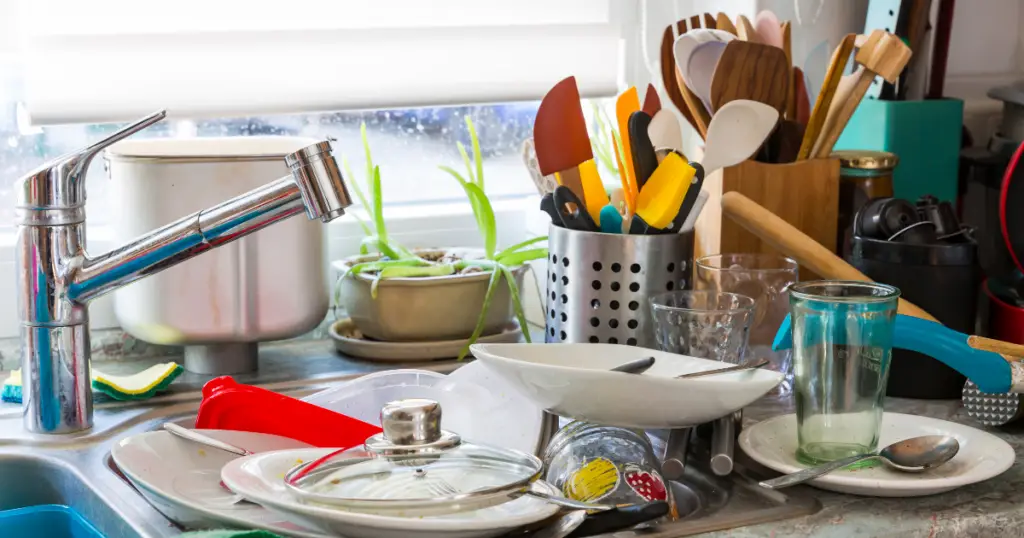
What causes Hoarding?
Scientists have identified a range of factors that may contribute to hoarding disorder, including biological and genetic makeup, cognitive biases, interpersonal difficulties, and life experiences. Specifically, studies suggest that some people are genetically predisposed to experience higher levels of anxiety and distress which can lead to compulsive behaviors such as hoarding. Additionally, individuals with hoarding disorder often have difficulty making decisions and struggle with perfectionism, both of which make it more likely for them to be unable to throw away or part with items. Finally, traumatic life events or experiences can also increase the risk of developing hoarding disorder.
What Are the Consequences of Hoarding?
Hoarding can lead to serious physical and mental health consequences, such as anxiety, depression, social isolation, overwhelmed living spaces that are cluttered with items, financial concerns due to the cost of purchasing and keeping items, and even difficulty accessing emergency services. Additionally, hoarding can cause an increased risk of falls or accidents due to unsafe navigation through a cluttered space. Families of those affected by hoarding are also affected indirectly; family members may feel overwhelmed or burdened when trying to help with cleaning or organizing the hoarder’s home.
Health Risks
Hoarding can pose serious health risks for the individual who is hoarding and those living in their home due to a lack of proper sanitation and hygiene. People with hoarding disorder may be exposed to biological contaminants from mold, dust, and pests, which can lead to respiratory issues or infectious diseases.
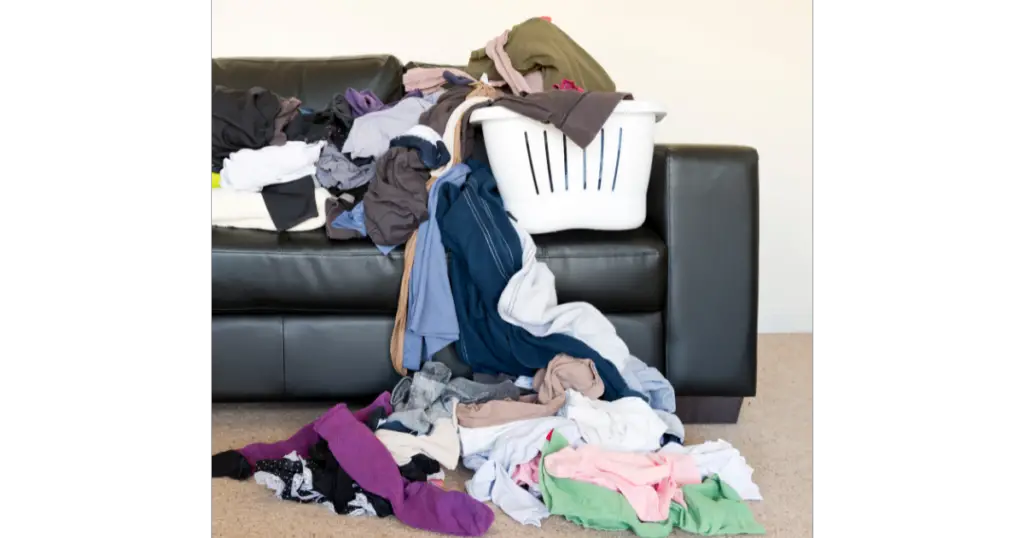
Can a hoarder be cured?
While there is no “cure” for hoarding disorder, there are treatments that can help those struggling with the condition to reduce clutter and gain the skills needed to manage their behaviors. Cognitive behavioral therapy (CBT) is a commonly recommended treatment for people with hoarding disorder; this type of therapy helps individuals identify and modify thoughts and behaviors related to acquiring, organizing, and discarding items. It can also help individuals learn how to make decisions about items that are difficult to let go of. Additionally, medication may be used in conjunction with CBT or on its own if deemed appropriate by a medical professional.
Professional Help
Professional help can be invaluable for those living with hoarding disorder. Psychiatrists, counselors, and social workers can provide a supportive environment to address underlying issues related to hoardings, such as depression and anxiety. Structural contractors may also be able to help individuals organize their belongings and restore the safety features of their homes to code requirements. Additionally, specialized cleaning service providers may be hired to ensure hazardous materials are properly disposed of in compliance with environmental regulations. With the help of these professionals, people with hoarding disorder can gain control over their environment and improve the quality of their lives.
[/et_pb_text][/et_pb_column][/et_pb_row][/et_pb_section]

